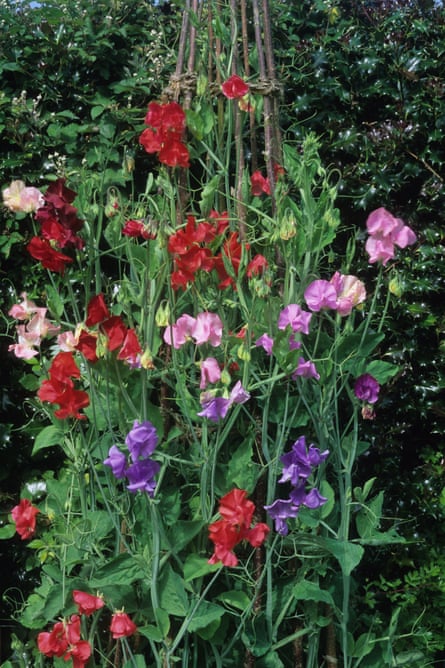It’s that time of year again. That time of year when I battle with the question of whether I should sow my sweet peas now or in the spring.
One thing I don’t battle with is which varieties I am going to sow. At the very least, I grow one pack of mixed ‘Spencer’ sweet peas, one modern variety and a packet or two of ‘Cupani’, whose scent, I reckon, is the best of the lot. I love its bi-coloured flowers and it’s tough to boot.

Admittedly it doesn’t produce the full stem of flowers that more modern varieties do, and for good reason. ‘Cupani’ is, as near as damn it, the original sweet pea, which was written about and introduced to cultivation in 1696 by Francisco Cupani - the Franciscan monk after whom they are named. Cupani himself had sent seed of the scrambling Lathyrus odoratus to Dr Robert Uvedale, a teacher who had developed a skill for growing unusual plants. By the early 1800s they had gained some popularity and were being grown by enthusiasts all over Europe. It took nearly a century for my ‘Spencer’ sweet peas to appear, but their arrival signalled the dawn of a new era of sweet pea cultivation and by the early 1900’s a real craze had started. Even today, plant breeders work hard to create an ever more perfect sweet pea; the only colour so far not achieved in the sweet pea world is yellow.

L. odoratus is found growing naturally in Southern Italy, Sicily and Malta. Cupani’s sweet peas had been collected from the wild, probably not far from the Sicilian botanic garden of which he was director. However their fate in the wild is not the success of the plants introduced by Cupani. The IUCN lists them as near threatened, with their population decreasing. Increased fires, overgrazing and over collection are causing a continuous decline in the wild population, and few of the original wild species are grown in botanic gardens or held in seedbanks.
What’s more, the plant breeder’s dream of producing a yellow sweet pea only has one hope; the critically endangered yellow and orange-flowered L. belinensis. Closely related to L. odoratus, it was discovered in Turkey in 1987 alongside a new main road that carries all the summer holidaymakers to their destinations. The population has crashed by 80% since its discovery. This wild crop relative of our beloved sweet peas, with its huge horticultural potential, is in dire need of help.
Next year is the United Nations International Year of Pulses and I intend for my allotment to be overflowing with them; peas and beans of every kind, ornamental and edible. One thing I will be doing is growing some of their wild relatives too. Alongside the stalwarts, I will be growing the wild form of L. odoratus as well as L. belinensis. What’s more, while writing this, I have decided not to break with tradition and will sow my sweet peas now, to give them a head start on 2016.

Comments (…)
Sign in or create your Guardian account to join the discussion